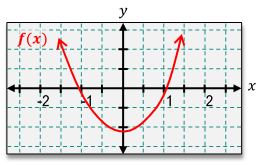Table of contents
- 0. Functions7h 52m
- Introduction to Functions16m
- Piecewise Functions10m
- Properties of Functions9m
- Common Functions1h 8m
- Transformations5m
- Combining Functions27m
- Exponent rules32m
- Exponential Functions28m
- Logarithmic Functions24m
- Properties of Logarithms34m
- Exponential & Logarithmic Equations35m
- Introduction to Trigonometric Functions38m
- Graphs of Trigonometric Functions44m
- Trigonometric Identities47m
- Inverse Trigonometric Functions48m
- 1. Limits and Continuity2h 2m
- 2. Intro to Derivatives1h 33m
- 3. Techniques of Differentiation3h 18m
- 4. Applications of Derivatives2h 38m
- 5. Graphical Applications of Derivatives6h 2m
- 6. Derivatives of Inverse, Exponential, & Logarithmic Functions2h 37m
- 7. Antiderivatives & Indefinite Integrals1h 26m
- 8. Definite Integrals4h 44m
- 9. Graphical Applications of Integrals2h 27m
- 10. Physics Applications of Integrals 2h 22m
2. Intro to Derivatives
Basic Graphing of the Derivative
Struggling with Calculus?
Join thousands of students who trust us to help them ace their exams!Watch the first videoMultiple Choice
Based on the graph of f(x), describe the graph of the derivative f′(x) on the interval (0,∞).

A
Below the x-axis
B
Above the x-axis
C
On the x-axis
 Verified step by step guidance
Verified step by step guidance1
Observe the graph of f(x). It appears to be a parabola opening upwards, which suggests that f(x) is a quadratic function.
Identify the behavior of f(x) on the interval (0,∞). The graph is increasing throughout this interval.
Recall that the derivative f′(x) represents the slope of the tangent line to the graph of f(x) at any point x. Since f(x) is increasing on (0,∞), f′(x) will be positive on this interval.
Consider the shape of the graph. Since it is a parabola, the derivative f′(x) will be a linear function. For a parabola opening upwards, the derivative is a positive linear function.
Conclude that on the interval (0,∞), the graph of the derivative f′(x) will be above the x-axis, indicating positive values.

 6:15m
6:15mWatch next
Master Graphing The Derivative with a bite sized video explanation from Nick
Start learning




